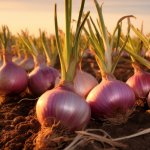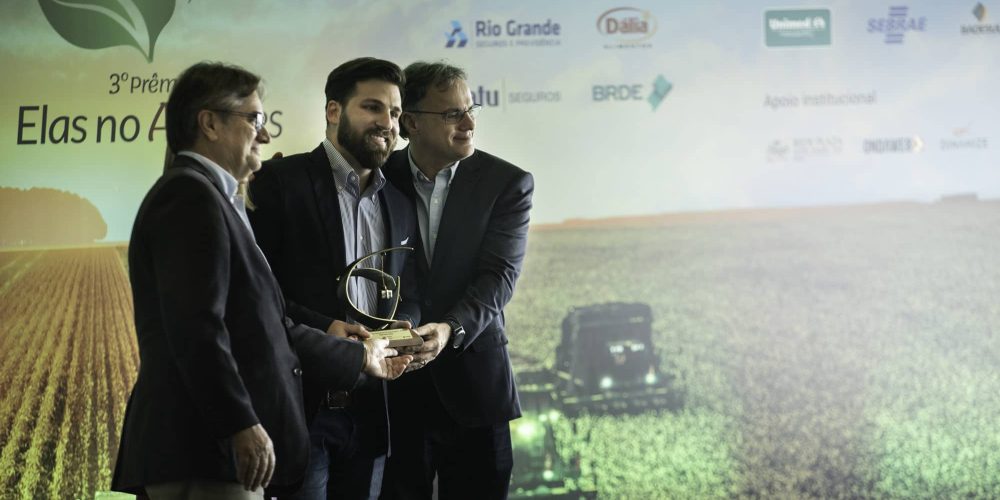What is sustainability in agriculture?
Over the past 40 years, Brazil has been a major provider of food, technology, and innovation in tropical agriculture for many countries (Camargo and Soares, 2021). According to these authors, in the vision for the future, it is essential to integrate efforts in a continuous and committed manner, in a two-way street with other nations, in favor of sustainability and food security throughout the planet. Nowadays, the big issue in all economic sectors is sustainable production. But what does sustainability mean? Broadly speaking, it can be described as the capacity to sustain a system. With regard to agriculture, it refers to the conscious use of natural resources, with the adoption of agricultural practices that aim to conserve soil and natural resources, based on scientific innovations for the production of healthy food, allowing future generations to benefit from the use of these same resources and promoting quality of life.
The United States Department of Agriculture (USDA) uses a definition of sustainable agriculture based on the studies of Greg Mclsaac, which suggests that “sustainable agriculture is a philosophy based on human goals and an understanding of the long-term impact of our activities on the environment and other species. This philosophy guides our application of previous experience and the latest scientific advances to create integrated agricultural systems that conserve resources and are equitable. These systems not only reduce environmental degradation but also increase agricultural productivity and promote economic viability in both the short and long term, maintaining stable rural communities and quality of life.”
In agriculture, technologies and knowledge considered sustainable are fundamental tools for expanding production, since, according to FAO data, factors such as greater productivity and intensification of crops in the same physical space contribute to the reduction of deforested areas and the preservation of resources. These technologies range from genetic improvement of species to the reduction in the number of applications of agricultural inputs – something that, in Brazil, is extremely successful. In our country, agricultural production has increased by approximately 386 % in the last 40 years, with an increase of only 33 % in the occupied area. These numbers were only possible thanks to the intense investment in research, technology and agricultural innovation.
Practices that promote sustainability in agricultural systems
Agricultural development takes place under different conditions, which is why it leads to the emergence of multiple production systems. This occurs because production situations are the result of complex interactions completed by humans within a given space or time, and based on a set of factors, some of which can be manipulated, enabling decision-making (Carbonera et al., 2020).
The Agricultural Sustainability Institute (UCDAVIS) suggests that to achieve sustainability in agricultural activities it is necessary to simultaneously meet three general objectives, which are: a healthy production environment, obtaining economic profit and social and economic equity. Based on these objectives, any decision-making should be focused on the conservation and maintenance of natural resources, which are mainly water, soil, air and the well-being of rural communities.
There are several agricultural practices considered conservationist that, when well employed, can achieve the objectives mentioned above. Among these practices are the no-till system (NTS) and crop rotation. These two systems combined provide improvements in soil quality, as they reduce erosion, increase nutrient cycling and, consequently, biological activity. Mulch represents a fundamental point in the principle of no-till planting, and is highly effective in protecting the soil, preventing the impacts of raindrops, wind and sunlight, in addition to favoring microbial activity.
According to Fidelis et al. (2003), crop rotation is considered a conservationist and sustainable practice, with the main advantages being the contribution to improving and maintaining soil fertility; lower incidence of pests, diseases and weeds in crops; greater diversification of crops on the property, minimizing the risks of failure in agricultural activity and contributing to the maintenance and improvement of crop productivity.
Another important point in soil preservation is the maintenance of biodiversity which, according to Franchini et al. (2011), contributes to the stability of production due to nutrient cycling, biological fixation of N, diversification of weed flora, reduction in the occurrence of diseases, increased soil coverage and the work carried out by the root system of species, reducing the degree of soil compaction in intensive systems.
The choice and care taken in the use of fertilizers also represent an essential factor in terms of preserving natural resources. Mineral fertilizers, such as urea, can have an environmental impact, from their manufacturing phase to their subsequent application to the soil when used inappropriately and without observing technical criteria, causing degradation of quality, pollution of rivers and springs, increased emissions of greenhouse gases (GHG) and increased resistance of pests and diseases. In this sense, the use of organic or organomineral fertilizers, especially those with gradual release of nutrients, are interesting alternatives that benefit the soil biota and favor the mineralization of nitrogen (N). Fertilization with organic or organomineral fertilizers also has another advantage: the use of by-products, inserting this industry into the important concept of circular economy. These fertilizers also act on the stability of the soil structure, especially on porosity, which increases the retention of water and oxygen.
Regarding the preservation of the atmosphere and the release of GHGs, there is still much debate about the role of agriculture. As Machado (2005) states, terrestrial ecosystems that comprise vegetation and soil are currently considered a large storehouse of carbon, especially soils. According to this author, there are several ways in which appropriate management of the terrestrial biosphere, particularly soil, can result in a significant reduction in GHG emissions, contributing to the sustainable development of crops.
According to the Embrapa website (2020), the issue of social equity has become paramount for buyers of agricultural products. Thus, respect for the human beings involved in production must be considered, something simple that permeates the most basic principles of humanity. Great progress has been made in this important aspect. Workers' conditions have improved significantly and they have been considered as subjects of the process.
Challenges that persist
Many challenges related to the implementation of sustainable practices in agriculture have already been overcome; however, some points still require attention. In this sense, in 2018, Embrapa published the book “Vision 2030: The Future of Brazilian Agriculture”, where the authors discuss, among other topics, the importance of socioeconomic and spatial changes in agriculture, as well as the intensification of sustainability in agricultural systems. Among the many challenges mentioned in this book, the authors emphasize that there must be encouragement for the restructuring of public and private technical assistance and rural extension (Ater) organizations for regionalized actions.
In a way, ecological practices aimed at sustainability are still costly to Brazilian rural producers, whether in terms of adopting and implementing new technologies, qualifying the workforce, or even in terms of the percentage of the area set aside for preservation (as required by law in Brazil). Therefore, without being able to increase the sale price of their product, farmers often find themselves paralyzed when faced with the changes needed to align the practical management practices on their properties with sustainable practices. In this regard, Embrapa (2018) suggests that the focus should be on increasing the bargaining power of producers in the agri-food production chains, especially small and medium-sized producers, vis-à-vis large retail chains and large industrial groups, making these small and medium-sized farmers feel more comfortable adopting the concepts of sustainable agriculture, since in the medium term, sustainability will also bring economic benefits.
Which tomorrow do you want to harvest?
ILSA is a world leader in the search for and transformation of renewable raw materials into high-performance products for modern agriculture. Our main challenge is to meet the needs of an increasingly specialized agriculture, developing products in a sustainable manner and with full social and environmental responsibility. Our Research and Development center is committed to seeking biotechnological solutions that allow us to obtain bioactive substances and compounds to nourish the soil and plants, in order to promote healthy agriculture in harmony with the environment. In this way, in addition to reducing the environmental impact of each product, we seek to be sustainable in all processes involving the production of our fertilizers.
It is important to emphasize that the value of an organic fertilizer goes beyond the simple supply of nutrients, as its use provides many beneficial effects to the soil. Organic matter acts as a source of energy for beneficial microorganisms (which fix nitrogen from the air in the rhizosphere and fungi that associate with the roots), improves structure and aeration, and has the ability to store moisture. It has a regulating effect on soil temperature, slows down the fixation of phosphorus and increases the cation exchange capacity (CEC), and helps to retain potassium, calcium, magnesium, and other nutrients in forms available to the roots, protecting them from leaching by rainwater or irrigation practices. In addition to all this, some products of its decomposition have a stimulating effect on root development (MALAVOLTA et al., 2000).
Bibliographic references
CAMARGO, FS; SOARES, CO Perspectives for innovation in Brazilian agribusiness. Journal of Agricultural Policy, Year XXX, n. 3, p. 3-7, 2021.
CARBONERA, R.; FERNANDES, SBV; OLIVEIRA, FG; MELLO, JB; UHDE, EM; RIGO, DS Diversity of production systems and sustainability in agriculture. Regional Development in debate, Caçador, v. 10, p. 98-118, 2020.
EMBRAPA. Vision 2030: The Future of Brazilian Agriculture. Brasília, 2018. 212 p.
FRANCHINI, JC; COSTA, JM; DEBIASI, H.; TORRES, H. Importance of crop rotation for sustainable agricultural production in Paraná. Londrina: Embrapa Soybean, 2011, 52 p.
FIDELIS, RR; ROCHA, RNC; LEITE, VT; TANCREDI, FD Some aspects of direct planting for soybean crops. Bioscience Journal, Uberlandia, v.19, n.1, p.23-31, 2003.
LOPES, MA Agriculture and the challenge of sustainability. 2007. Hypertext article. Available at:http://www.infobibos.com/Artigos/2007_1/sustentabilidade/index.htm>.
MACHADO, PLOA Soil carbon and the mitigation of global climate change. New Chemistry, vol.28, n.2, p. 329-334, 2005.
MALAVOLTA, E.; GOMES, FP; ALCARDE, JC Fertilizers and fertilization. [Sl: sn], 2000.
Food and Agriculture Organization of the United Nations (FAO) – available at: https://www.fao.org/brasil/pt/
Embrapa Portal – available at: https://www.embrapa.br/busca-de-noticias/-/noticia/57539373/artigo—sustentabilidade-na-agricultura
US Department of Agriculture (USDA) – available at: https://www.usda.gov/
Authors
- Agricultural Eng. Msc. Aline Tramontini dos Santos
- Agricultural Eng. Msc. Carolina Custodio Pinto
- Agricultural Eng. Msc. Thiago Stella de Freitas






